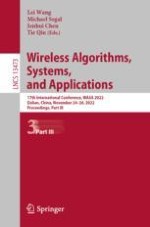2022 | OriginalPaper | Chapter
CodeDiff: A Malware Vulnerability Detection Tool Based on Binary File Similarity for Edge Computing Platform
Authors : Kang Wang, Longchuan Yan, Zihao Chu, Yonghe Guo, Yongji Liu, Lei Cui, Zhiyu Hao
Published in: Wireless Algorithms, Systems, and Applications
Publisher: Springer Nature Switzerland
Activate our intelligent search to find suitable subject content or patents.
Select sections of text to find matching patents with Artificial Intelligence. powered by
Select sections of text to find additional relevant content using AI-assisted search. powered by
